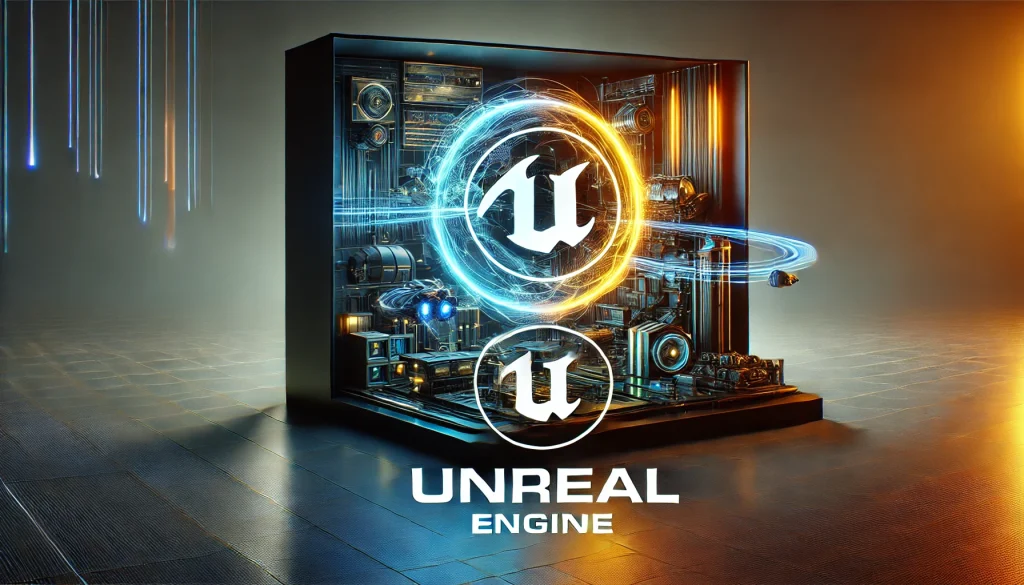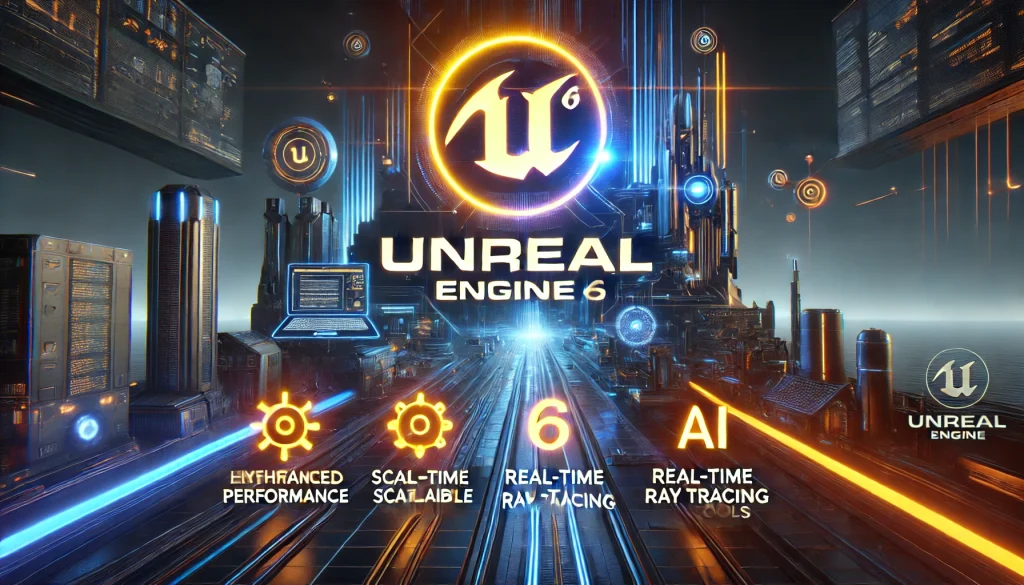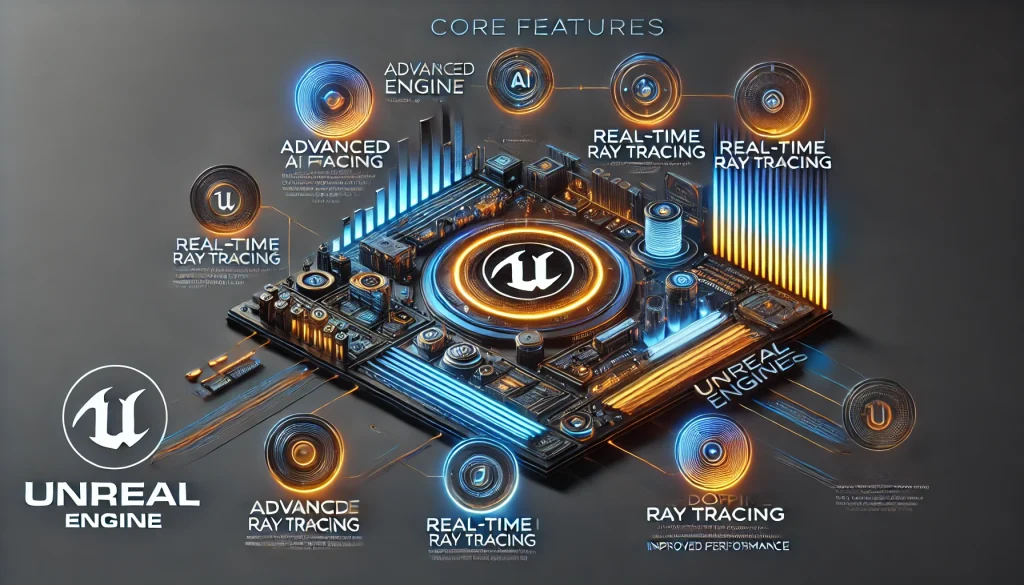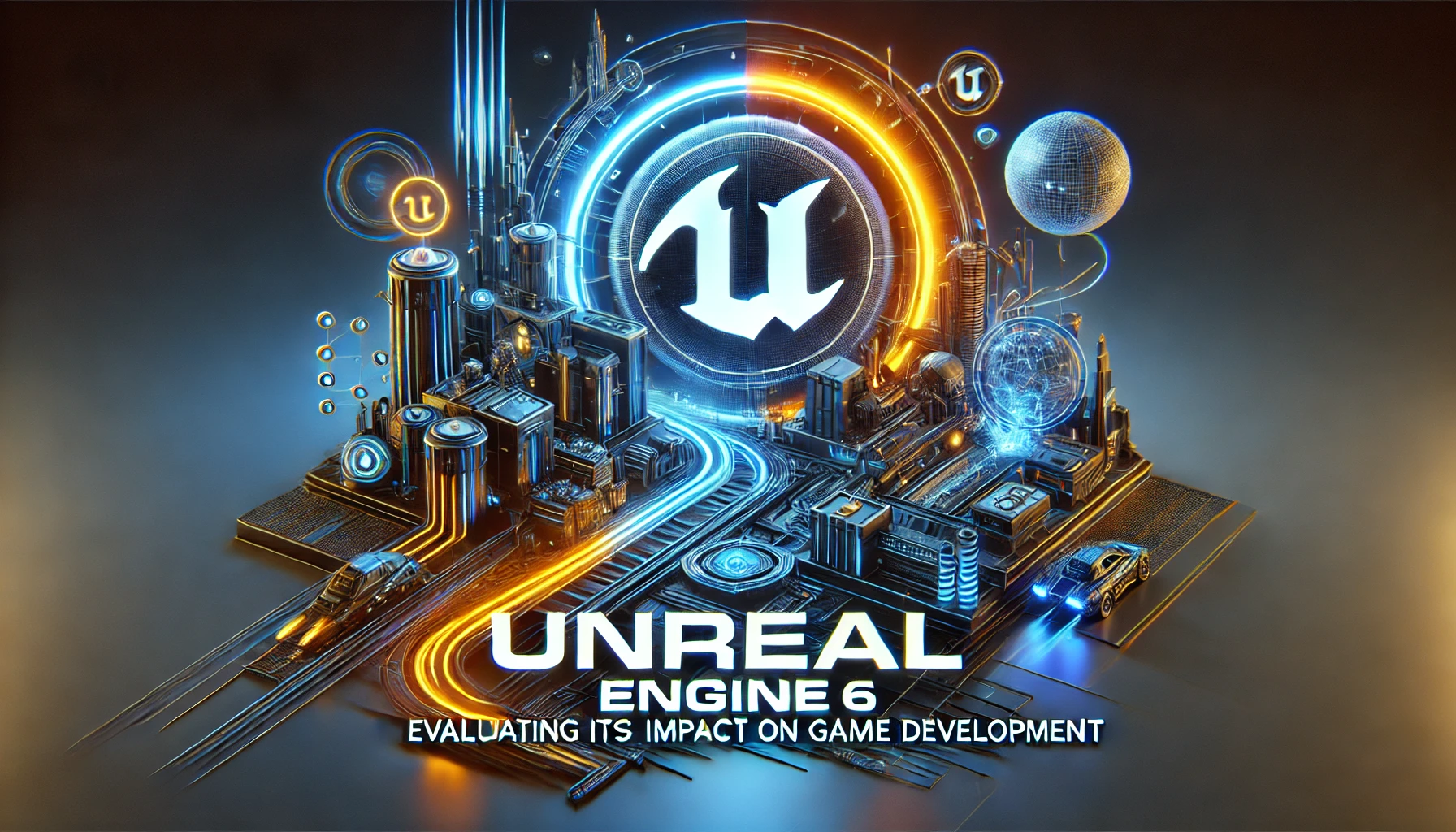Is Unreal Engine 6 Set to Redefine the Future of Gaming?

As the gaming industry evolves, cutting-edge technologies play a pivotal role in determining what’s possible. At the forefront of these innovations is Unreal Engine 6, an anticipated powerhouse poised to change the way we design, develop, and experience video games. In this review, we explore the impact of it is likely to have on game development, how it compares to its predecessors, and why developers around the world are keeping a close eye on its release. With Unreal Engine 4 still dominating, is the upgrade to Unreal Engine 6 worth it? Read on to find out.
Overview
alt text: Unreal Engine 6 promises enhanced performance, scalability, real-time ray tracing, and advanced AI for all developers.

It is the next generation of Epic Games’ widely acclaimed game development platform. Known for its outstanding visual fidelity, versatile design, and seamless integration across multiple platforms, Unreal Engine 6 takes things further by promising enhanced performance, greater scalability, and improved developer tools. Designed to push boundaries, this version builds on the foundation laid by Unreal Engine 4 but comes packed with new features like real-time ray tracing and advanced AI mechanics. It’s tailored not only for AAA game studios but also for indie developers aiming to create complex and immersive unreal games.
Features Overview:
- Feature 1: Real-time Ray Tracing – A dynamic lighting system that brings unparalleled realism to gaming environments.
- Feature 2: Nanite Virtualized Geometry – A new system that allows developers to render complex, high-poly models in real-time without compromising performance.
- Feature 3: Advanced AI and Physics Engines – It provides state-of-the-art AI for smarter NPCs and real-world physics for more immersive gameplay.
With these groundbreaking features, It stands as a vital tool for developers looking to craft next-level gaming experiences.
Unreal Engine 6: Pros and Cons

While It is boasts a multitude of advancements, it’s important to consider both its strengths and potential drawbacks. Here’s a breakdown of the pros and cons to help you understand its overall impact.
| Pros | Description |
|---|---|
| Unparalleled Visuals | With real-time ray tracing and Nanite technology, it offers visuals that are close to photorealism, making game environments more life-like than ever. |
| Cross-Platform Flexibility | Unreal Engine 6 ensures seamless transitions across PC, consoles, and mobile platforms. |
| Enhanced AI Systems | The engine’s improved AI systems make NPC behavior more intuitive, enriching gameplay experiences. |
| Accessible for All Developers | Whether you’re a large studio or an indie developer, Unreal Engine 6 provides scalable tools for projects of all sizes. |
| Cons | Description |
|---|---|
| Steep Learning Curve | Unreal Engine 6 comes with a wealth of features, which can be overwhelming for developers new to the ecosystem. |
| Hardware Demands | Its advanced graphical capabilities require high-end hardware, making it less accessible for small-budget developers. |
| Resource-Intensive | While it offers stunning visuals, these often come at the cost of increased CPU and GPU usage, which may affect performance on older systems. |
Delving Into Unreal Engine 6: A Comprehensive Performance Review

Breaking Down Unreal Engine 6 – A Detailed Analysis of Performance, Design, and Usability
As the successor to Unreal Engine 4, Unreal Engine 6 aims to set a new standard for game development. Let’s dive deep into the engine’s core features, focusing on its performance, design, and overall usability for developers.
Design
Unreal Engine 6’s design philosophy revolves around accessibility and flexibility. Its intuitive interface makes it easier to navigate compared to earlier versions, but its vast toolset still requires a significant learning curve. The engine introduces customizable workflows, allowing developers to tailor the environment based on their specific project needs. Whether you’re building a fornite ranked mode or a vast open-world RPG, It provides the tools to build immersive worlds with ease.
Functionality
One of the standout features is its support for real-time ray tracing. This technology allows developers to simulate realistic lighting and reflections, resulting in incredibly lifelike environments. Additionally, the Nanite system lets developers create highly detailed models without needing to optimize each one individually, which was a challenge in Unreal Engine 4. For developers who want to know how to use Unreal Engine for large-scale projects, these features simplify the process significantly.
Performance
In terms of performance, It delivers a major upgrade over its predecessor. Built to handle more complex scenes, higher polygon counts, and enhanced physics simulations, the engine maintains smooth performance without sacrificing visual quality. However, it’s important to note that this performance boost comes at the cost of higher system requirements. Developers working on less powerful hardware might struggle to achieve optimal results, particularly in demanding game genres like real-time strategy or high-action RPGs.
Unreal Engine 6 vs Competitors: A Comparative Review
How Does it Stack Up Against Competitors?
In the highly competitive game development market, It competes against other engines such as Unity, CryEngine, and Godot. How does Unreal Engine 6 compare? Let’s look at a few key aspects.
| Feature | Unreal Engine 6 | Unity | CryEngine |
|---|---|---|---|
| Visual Fidelity | High-quality, near photorealism with real-time ray tracing | Moderate | Comparable, but not as scalable as UE6 |
| Ease of Use | High learning curve for beginners | Beginner-friendly | Intermediate |
| Platform Support | Cross-platform (PC, mobile, console) | Cross-platform | Cross-platform |
| Community Support | Large, active community | Extensive community, smaller than UE | Moderate |
It leads in visual fidelity, making it the preferred choice for developers focusing on AAA-level graphics. However, it falls short in ease of use compared to Unity, which remains a go-to engine for beginners and smaller projects.
Conclusion
Our Final Verdict on Unreal Engine 6
Unreal Engine 6 is undoubtedly a game-changer for the industry. Its unparalleled graphical capabilities, robust development tools, and cross-platform flexibility make it an ideal choice for developers aiming to push the boundaries of what’s possible in gaming. However, its steep learning curve and hardware requirements could present challenges, especially for smaller studios. Overall, if you’re a developer looking for a high-performance engine to create stunning and complex game worlds, Unreal Engine 6 is well worth the investment.
Unreal Engine 6 Rating
In terms of features, performance, and potential, It earns a solid 4.5 out of 5 stars. Its visual capabilities and advanced features are unmatched, though the learning curve might be a hurdle for some.
FAQ
What sets Unreal Engine 6 apart from Unreal Engine 4?
Unreal Engine 6 introduces real-time ray tracing, Nanite virtualized geometry, and enhanced AI systems, setting it apart from Unreal Engine 4. These advancements enable developers to create more immersive and visually striking unreal games.
How does Unreal Engine 6 impact indie developers?
Unreal Engine 6 provides scalable tools that allow indie developers to compete on a level playing field with AAA studios. Although it demands more powerful hardware, its ease of use and accessibility for indies make it a valuable asset.
Is Unreal Engine 6 compatible with current-generation consoles?
Yes, Unreal Engine 6 is designed to work seamlessly across platforms, including the latest consoles like the PS5 and Xbox Series X. This ensures developers can create unreal games that function smoothly on both high-end and mid-tier hardware.
Resources
- GamingBible. Unreal Engine 6 Teased
- SDLCCorp. How Unreal Engine is Revolutionizing the Gaming Industry
- StriveMindz. How Unreal Engine is Transforming Game Development Industry
- Medium. The Impact of Unreal Engine on the Efficiency of Game Studios
- Bombay Softwares. Unreal Engine Revolutionizing the Gaming Industries

